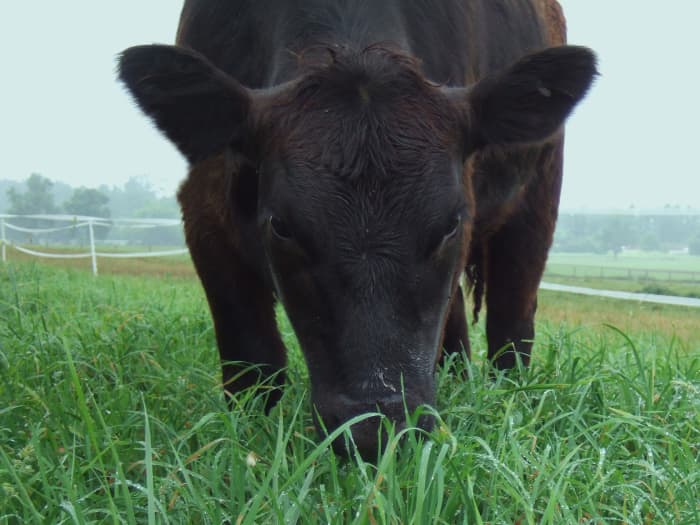Intake Study
Persist Good Alternative to Novel-Endophyte Fescue
Results from an intake and digestibility study have recently been published in Crop Science. The study was conducted by J.C. Burns and D.S. Fischer, using a low endophyte tall fescue (Cajun), two novel endophyte tall fescues(Max-Q and HM4), and Persist Orchardgrass. While the primary purpose of the study was to measure and document the nutrient values and digestible forage qualities without the “confounding influence of toxic endophyte,” the study also substantiates those same nutrient values and digestible forage qualities for Persist orchardgrass. This may be particularly valuable for beef and dairy producers, as well as hay farmers specifically as it relates to comparing Persist orchardgrass to novel-endophyte tall fescues such as Max-Q.

As part of the trial, researchers planted and grew hay crops of each variety. Those crops were later fed to Angus steers and Boer x Spanish weather goats. Researchers took numerous measurements including daily weights, fecal collections, and hay samples. Nutrient compositions were calculated using NIRS and wet chemistry methods. The entire report is quite extensive, yet worth the read. As it relates to Persist orchardgrass and steers, the study showed intake of Persist orchardgrass to be 14% higher than that of Max-Q tall fescue. While Max-Q had a higher digestion rate, the overall Digestible Dry Matter and Digestible NDF were higher in Persist than in Max-Q. The researchers concluded their report with this statement: "These data indicate that in a cattle production setting, either Max Q or Persist could be expected to give similar animal daily responses."
It is important to note that the researchers chose Persist specifically because it was bred for improved persistence. Persist is the most extensively bred orchardgrass available, with original plant collections and selections dating back over five decades. While only on the market for six years, Persist is fast becoming recognized as the most dependable, persistent orchardgrass variety available. It is also recognized as being able to tolerate close grazing, provide excellent hay yields, overcome cold weather and ice storms, survive severe droughts, and generally out-yield and out-survive other orchardgrass varieties.
Download the full study or read it in Crop Science Vol. 50 January-February 2010.